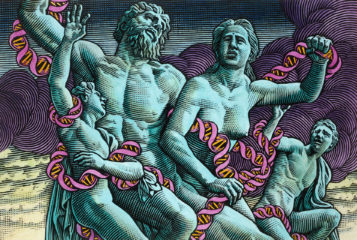American researchers have for the first time created mice with genetically two male parents. In a three-step process, utilising stem cell technology to create induced pluripotent stem cells (iPS), the genetic material from two male mice was used to create both male and female offspring.
'Our study exploits iPS cell technologies to combine the alleles from two males to generate male and female progeny, a new form of mammalian reproduction', wrote the authors of the study carried out at the University of Texas. Professor Richard Behringer, who led the study states: 'It has been a weird project, but we wanted to see if it could be done in mice.…These findings have novel implications for mammalian reproduction and assisted-reproductive technology'.
In the first step, cells were isolated from the fetus of a male mouse. These cells were transformed into iPS cells and given their male origin, they contained XY sex chromosomes. However as the cells continued to divide, approximately one percent lost their Y chromosome due to spontaneous errors in cell division. This small proportion of cells therefore became genetically female, in other words XO.
In the second step, the XO cells were injected into early-stage embryos, called blastocysts, isolated from a normal female mouse. The injected embryos were transplanted into a surrogate female mouse, who carried the embryos to term and gave birth to chimeras. Chimeras by definition contain populations of cells with at least two distinct genetic origins. In this instance the two genetic populations were that of the XO cells and the blastocyst.
Finally the female chimeras were mated with normal male mice. The eggs of these female chimeras either contained the genetic material of the original blastocyst, or the genetic material from the XO cells. This key segregation of genetic material meant that some of the offspring of the female chimeras contained only genetic material originating from male mice, in other words the XO cells and the male mouse who mated with the female chimera. In this way offspring with genetically two fathers and no mother were produced.
The application of this technology to allow two human males to produce a child is currently unlikely due to the biological complexities underlying human iPS cells and ethical implications of creating human chimeras. 'One day it may be possible in people, although the technical barriers are far higher than in mice, plus there are major safety issues', said Professor Chris Mason, head of the Stem Cell and Regenerative Medicine Bioprocessing Unit at University College London.
This study was published in the journal Biology of Reproduction.
Sources and References
-
Generation of viable male and female mice from two fathers
-
Scientists Use Stem Cells To Create Mice With Two Genetic Fathers
-
Mice Are Created From Two Males .
-
Reproduction Hack Makes Mice From Two Dads
-
Scientists engineer new form of mammal reproduction to create  mice that have two fathers
-
Look dads — no mum!
-
Scientists Engineer Mice With Two Dads







Leave a Reply
You must be logged in to post a comment.